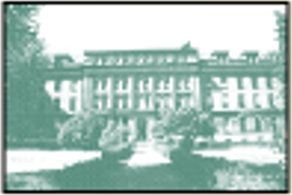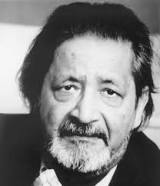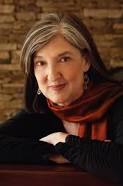
The following story is from Alison Holmes, a student in my 2013 Travel, Food and Wine Writing Class in Montalcino, Italy. I’ll be publishing a number of stories from students my travel writing class on this blog. They provide a vivid picture of the wonderful places, people and experiences encountered on the trip.
BBC Italia: A Newbie Somm Tastes (many) Barolo, Brunello and Chiantis
By Alison Holmes
The end of the tunnel was near. I thought about the upcoming, fresh mountain air, the sensation of wind in my hair through the open window and the taste of Piedmontese wine over lunch just a few hours away. My mind happily wandered as I navigated out of the tunnel and on into Italy, right into the arms of the local carrabineri.
Two grim policemen stood in the rain, blocking my route with a round sign on a stick, the kind used by lollypop ladies. Armed with about three words of Italian, I rolled down the window and raised my eyebrows to indicate surprise. They approached and asked for my license and then for an international version. With my hands, I indicated I only had the one, gleaning from their tone of voice and facial expressions it was the law that I had both versions in Italy. True or not, my misdemeanor resulted in a lengthy reprimand from one. Certo, certo nodded the other, lips turned downwards. I paid the fine, sizeable and in cash, took the receipt and wondered whether driving was the best mode of transport in Italy.
For already, the roughly seven-mile drive through the Mont Blanc tunnel from Chamonix, France to Courmayeur, Italy through the alps proved to be a torment for the not so hearty, namely my travelling companion Jan. She hails from flat-land Australia and had not anticipated, she claimed, that the drive from France to our first stop in the Piedmont would be plagued with steep inclines, tunnels and descents worthy of a ride in a Disney park.
With a recent sommelier’s diploma under my belt, much of my time is spent learning more about wine. Everyone, I always say, can learn something new with every bottle uncorked. And so off to northern Italy I go, to size up the lure of these wines on their own turf. For here, in Northern Italy, the rivalry for ‘King of Wine’ reputation is very real indeed.
This ten-day journey covered a drive through some of the most picture perfect countryside: to the Piedmont, to Barolo, and then to Tuscany, to Fiesole outside Florence and on to Montalcino. Nebbiolo, Chianti and Sangiovese territories, in grape order.
It was raining heavily as we stopped for lunch in destination uno, Bra, the Piedmontese town about fifty kilometers south of Turin. Famous as the birthplace of the slow food movement and a stone’s throw from Barolo, we enjoyed a casual lunch with a delicious glass of a light-bodied Barbera d’Asti, known for flavors and aromas of fresh fruit, at the Slow Food branded (snail logo) l’Osteria del Boccondivino.
Trying to forget the day’s negative start, we chatted about the region’s varietals and their merits over lunch. Behind us a table of local gents with time on their hands enjoyed bottle after bottle of various nebbiolos, each selected from what looked like an old fashioned library shelf, this one replete with bottles of wine. I began to relax and look out the window, letting Italy work its magic.
Satiated, we headed off to Barolo and check into a well-appointed three-room agriturismo where the owner, Germano Angelo, sells his wines including Barbera (a grape) and Barbaresco and Barolo (from nebbiolo grapes). Wandering through town, I am hypnotized by Barolo’s complete dedication to its only craft, winemaking. No one does anything else here it would seem, and with reason. Tasting many of the offerings in the wine shops with open doors and open bottles, fond memories of my other loves, Burgundy, Napa and the Languedoc, start to fade. Could this be the one?
That night we enjoyed a modest bottle of Barolo D’Alba (26 Euros) over dinner at the Osteria la Cantinella with some sumptuous tagiatelle ragu. I asked how the pasta was made. “Daily by my mama,” said the girl waiting tables. “She puts forty egg yolks to every kilo of flour.” At that rate, I calculated, there would have to be more chickens than vines in Barolo. Weighing the delights of small towns versus cities, I head to my room where the pigeons in the rafters had also turned in.
The following morning the church bells rang in the day and we were off, to Fiesole where Chianti reigns supreme. Chianti is a blend made from four grape varieties. Sangiovese (the most prevalent grape in Italy) canaiolo, and two grapes used mainly for white wines, trebbiano and malvasia.
Chianti, depending upon where the grape is grown and the vintage, ranges from light and fruity all the way to a full bodied, dry, tannic and acidic wine. With our dinner that night we selected a Castello di Monsanto Il Poggio, Chianti Classico Riserva (30 Euros). This we enjoyed followed by a cool glass of limoncello outside on the panoramic terrace of the Trattoria Le Cave di Maiano just outside Fiesole in the hills, the surroundings enchanting even in the drizzling rain. Florence down below does not tempt me even remotely. I could stay forever, except for the fact that I now knew I favored Barolo over Chianti.
Yet more varietals beckon and we leave for Montalcino, about three hours south to sample some sangiovese masterpieces. Montalcino, a Tuscan hilltop town, boasts some of the most beautiful views imaginable and ample diversions for wine novices alike. Restaurants, cafes, shops, markets etc make this town a very special destination. And for the wine lover, there are about 250 producers of Brunello di Montalcino wines to work your way through. Made of 100% sangiovese grapes, a Brunello must be aged for four years (five for a riserva), two of those in oak and then four months in bottles. The result is an unforgettable, elegant wine, which sings on your tongue: berries, vanilla and spice. The wine merchant located in the town’s 14th century fortress was happy to offer tastings.
The trunk of the car groaned with the weight of the bottles collected en route as we set off for home, stopping at the Prada outlet outside Florence. For what somm doesn’t need a handbag to carry her Brunello?
 The Writer's Workshop
The Writer's Workshop 











